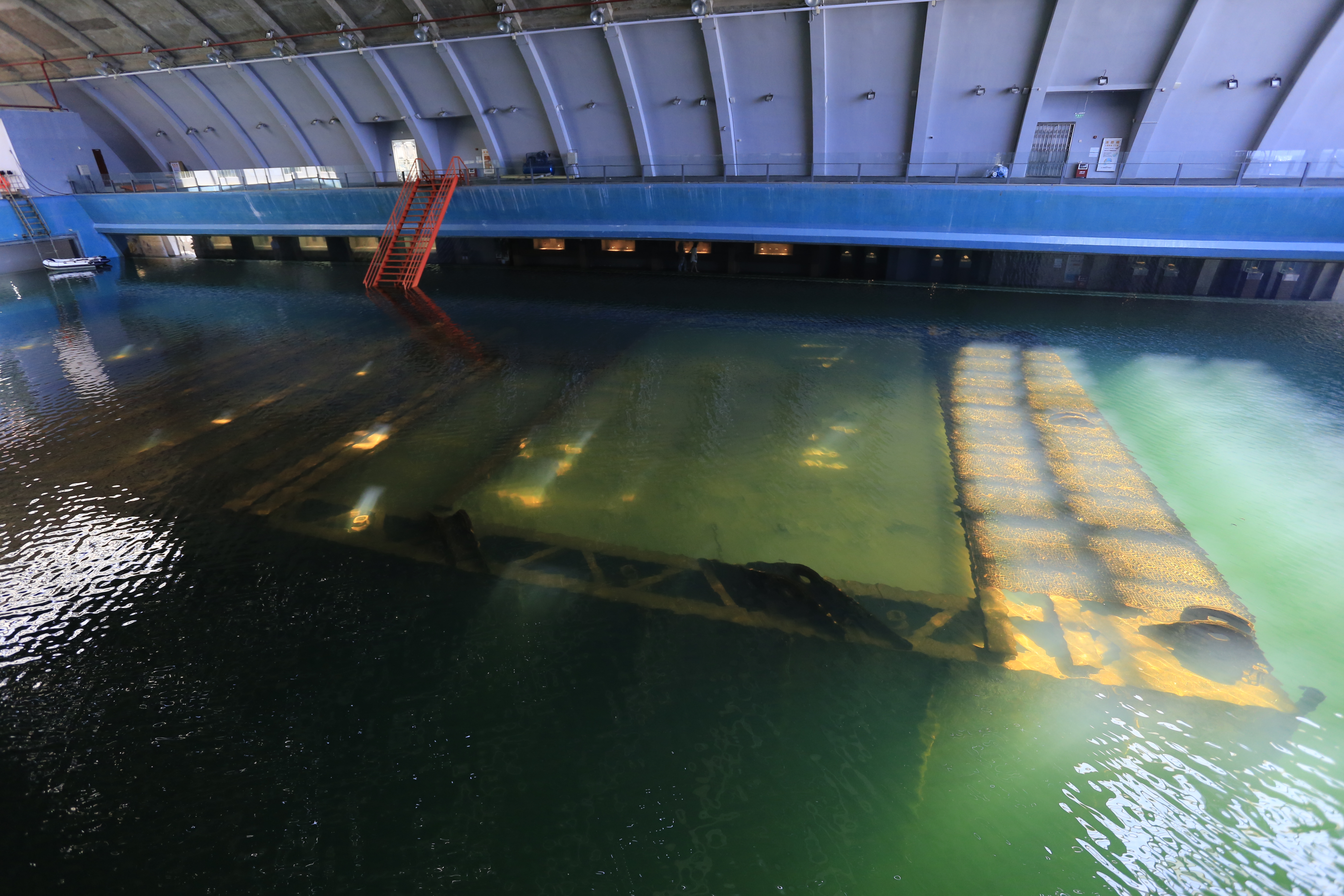Nanhai 1 on:
[Wikipedia]
[Google]
[Amazon]
The ''Nanhai One'' ( zh, t=南海一號, s=南海一号, p=Nánhǎi Yī Hào – ''South China Sea No. 1'') is a Chinese
 When the wreck was first found, about 200 pieces of porcelain from the
When the wreck was first found, about 200 pieces of porcelain from the
Nanhai No. 1 Museum
on the UNESCO website 1987 archaeological discoveries Merchant ships of China Shipwrecks in the South China Sea Shipwrecks of China Song dynasty Underwater archaeological sites Yangjiang {{China-hist-stub
merchant ship
A merchant ship, merchant vessel, trading vessel, or merchantman is a watercraft that transports cargo or carries passengers for hire. This is in contrast to pleasure craft, which are used for personal recreation, and naval ships, which are u ...
, which sank into the South China Sea
The South China Sea is a marginal sea of the Western Pacific Ocean. It is bounded in the north by the shores of South China (hence the name), in the west by the Indochinese Peninsula, in the east by the islands of Taiwan and northwestern Phil ...
during the Southern Song dynasty
The Song dynasty (; ; 960–1279) was an imperial dynasty of China that began in 960 and lasted until 1279. The dynasty was founded by Emperor Taizu of Song following his usurpation of the throne of the Later Zhou. The Song conquered the rest ...
between 1127 and 1279.
History
The shipwreck was found in 1987 by a team from Maritime Exploration & Recoveries PLC (MER PLC) ofSouthampton
Southampton () is a port city in the ceremonial county of Hampshire in southern England. It is located approximately south-west of London and west of Portsmouth. The city forms part of the South Hampshire built-up area, which also covers Po ...
, England, during their search for the wreck of the 18th-century ship ''Rhynsburg''. MER PLC had a joint venture with the Guangzhou
Guangzhou (, ; ; or ; ), also known as Canton () and alternatively romanized as Kwongchow or Kwangchow, is the capital and largest city of Guangdong province in southern China. Located on the Pearl River about north-northwest of Hong Kon ...
branch of the Chinese Salvage Company.
The ship is long, wide, and in height (excluding the mast). It is the biggest ship of its kind to be found. It was the first ancient vessel discovered on the Maritime Silk Road
The Maritime Silk Road or Maritime Silk Route is the maritime section of the historic Silk Road that connected Southeast Asia, China, the Indian subcontinent, the Arabian peninsula, Somalia, Egypt and Europe. It began by the 2nd century BCE and ...
. According to the head of the excavation project, the ship left port in southern China to trade with foreign countries and sank probably due to stormy waves. It was quickly buried by silt.
Artefacts
 When the wreck was first found, about 200 pieces of porcelain from the
When the wreck was first found, about 200 pieces of porcelain from the Song dynasty
The Song dynasty (; ; 960–1279) was an imperial dynasty of China that began in 960 and lasted until 1279. The dynasty was founded by Emperor Taizu of Song following his usurpation of the throne of the Later Zhou. The Song conquered the rest ...
were recovered, together with Song coins, about 130 kilos of silver bars, a brass kettle and a gold waist chain. These were handed to the China Salvage Company representatives, intact. At the time of the second survey, the wreck was reported to have 60,000 to 80,000 items on board.
In 2007, China began to raise the ship and its artifacts. The ship was placed in a pool-type container called the "Crystal Palace" in the purpose-built Maritime Silk Route Museum
The Maritime Silk Route Museum () is the name of a museum on Hailing Island, Yangjiang, Guangdong Province, China. Work on the museum started in late 2004 and the museum opened to the public on 24December 2009.
The museum was built to hold 300 ...
. The container is 64 meters long, 40 meters wide and 23 meters high. It contains seawater and is about 12 meters in depth. Visitors are able to watch the ongoing excavation of the ship through windows on two sides of the pool.
See also
*''Huaguangjiao One
''Huaguangjiao One'' () is a Chinese merchant ship, built during the Southern Song dynasty (1127–1279), that sank off the coast of the Paracel Islands (Xisha Islands) in the South China Sea. The ship's name translates as "Magnificent China Re ...
''
*Quanzhou ship
The Quanzhou Ship (), or Quanzhou wreck, was a 13th-century Chinese seagoing sailing junk – rounds the length and beam width to 34 and 9.8 m, respectively (also abstract on pp. 62–63, 240-242) that sank near the city of Quanzhou in Fujian Pr ...
, from the Quanzhou Bay
*Shinan ship
The Shinan ship (also spelled "Sinan") was a 14th-century Chinese ship that sank near what are today the Shinan islands, South Korea, around the year 1323, and was discovered in 1975. It was likely to have been part of a trade fleet between Po ...
*Lists of shipwrecks
This is an index of lists of shipwrecks, sorted by different criteria.
By location
* List of shipwrecks of Africa
* List of shipwrecks of Asia
* List of shipwrecks of Europe
** List of shipwrecks of France
** List of shipwrecks of the Uni ...
References
External links
Nanhai No. 1 Museum
on the UNESCO website 1987 archaeological discoveries Merchant ships of China Shipwrecks in the South China Sea Shipwrecks of China Song dynasty Underwater archaeological sites Yangjiang {{China-hist-stub